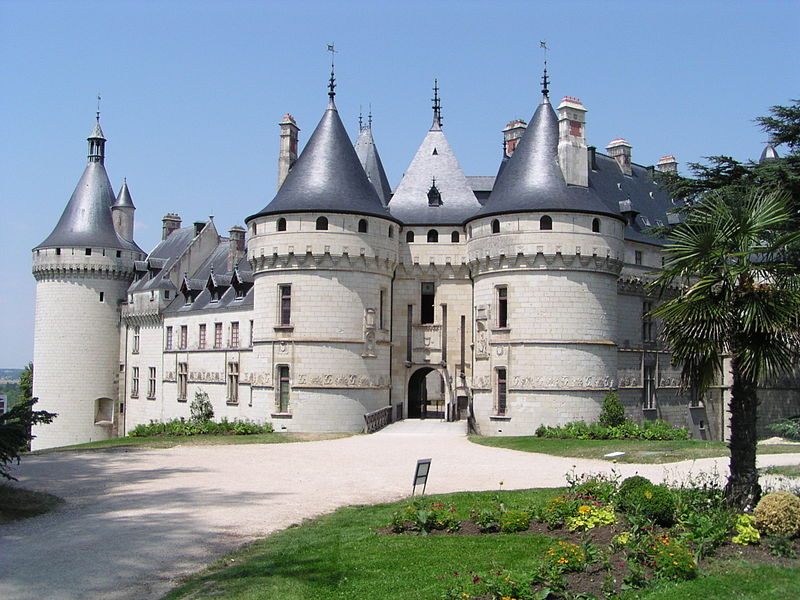Chateau de Chaumont: Turbulent history.
The Chaumont castle, located along the Loire in the region of Loir-et-Cher in France, has a turbulent history. Originally, a primitve fortress held the grounds against attacks from neighboring feudal lords. This was in the 10th century. Later on, the castle was improved by successors and passed into the Amboise family, which held it for five centuries. In 1465 it was burnt down by the French king Louis XI in a reprisal for the actions of its owner Pierre d'Amboise. Pierre d'Amboise had been involved in an anti-Royal revolt known as the "Ligue du bien public" (Leage of the public good). It was subsequently rebuilt by his successors and completed by Charles d'Amboise de Chaumont in the period 1498 - 1510.
The Chaumont castle was purchased in 1560 by the controversial French Queen Catherine de Medicis, a year after King Henry II's death in a duelling game at the Place des Vosges in Paris. Catherine de Medicis had three sons, who ruled as kings in fairly rapid succession due to weak health on the part of the two first (Francis II and Charles IX) and due to assasination of the third, Henry III. During the reign of these three sons, Catherine played an important role behind the scenes and had a large part of responsibility for the persecution of French protestants which among many other things resulted in the night of St Bartholomeus, the famous massacre of the protestant nobility which attended a large gathering at the nearby Chateau d'Amboise. At the Chaumont castle, Catherine de Medicis entertained numerous astrologers, among them Nostradamus. Her late husband Henry II's long time mistress, Diane de Poitiers, at that time lived in a beautiful castle, Chenonceau, given to her by Henry II. In 1559, Catherine de Medicis wanted that castle and forced Diane de Potiers to exchange Chenonceau for Chaumont. Diane de Poitiers did not like Chaumont and stayed there only a short while. Later on, her descendants sold it. It has chaged owners numerous times since then, and in 1938 the French government became the owners. Read more here.
The Chaumont castle was purchased in 1560 by the controversial French Queen Catherine de Medicis, a year after King Henry II's death in a duelling game at the Place des Vosges in Paris. Catherine de Medicis had three sons, who ruled as kings in fairly rapid succession due to weak health on the part of the two first (Francis II and Charles IX) and due to assasination of the third, Henry III. During the reign of these three sons, Catherine played an important role behind the scenes and had a large part of responsibility for the persecution of French protestants which among many other things resulted in the night of St Bartholomeus, the famous massacre of the protestant nobility which attended a large gathering at the nearby Chateau d'Amboise. At the Chaumont castle, Catherine de Medicis entertained numerous astrologers, among them Nostradamus. Her late husband Henry II's long time mistress, Diane de Poitiers, at that time lived in a beautiful castle, Chenonceau, given to her by Henry II. In 1559, Catherine de Medicis wanted that castle and forced Diane de Potiers to exchange Chenonceau for Chaumont. Diane de Poitiers did not like Chaumont and stayed there only a short while. Later on, her descendants sold it. It has chaged owners numerous times since then, and in 1938 the French government became the owners. Read more here.
